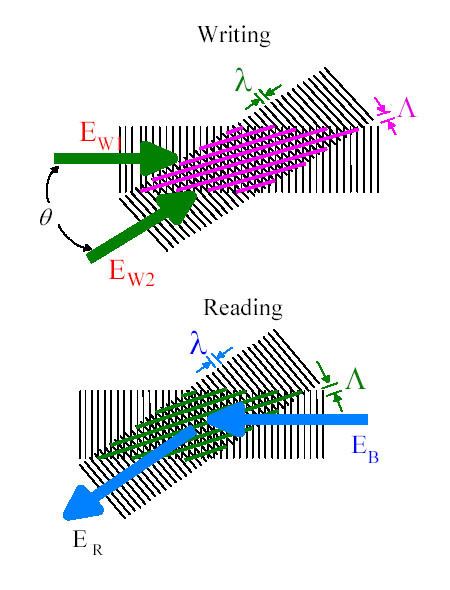 | ||
Electromagnetically induced grating (EIG) is an optical interference phenomenon where an interference pattern is used to build a dynamic spatial diffraction grating in matter. EIGs are dynamically created by light interference on optically resonant materials and rely on population inversion and/or optical coherence properties of the material. They were first demonstrated with population gratings on atoms. EIGs can be used for purposes of atomic/molecular velocimetry, to probe the material optical properties such as coherence and population life-times, and switching and routing of light. Related but different effects are thermally induced gratings and photolithography gratings.
Contents
Writing, Reading and Phase matching conditions for EIG diffraction
Figure 1 shows a possible beam configuration to write and read an EIG. The period of the grating is controlled by the angle
The phase-matching conditions for the EIG for the plane-wave approximation is given by the simple geometric relation:
where the angles are given according to Fig. 2,
Types of EIG
Matter Gratings: The writing lasers form a grating by modulating density of matter or by localizing matter (trapping) on the regions of maxima (or minima) of the writing interference fields. A thermal grating is an example. Matter gratings have slow dynamics (milliseconds) compared to population and phase gratings (potentially nanoseconds and faster).
Population Gratings: The writing lasers are resonant with optical transitions in the matter and the grating is formed by optical pumping. (See Fig. 3)
Coherence Gratings: A grating where the writing lasers form a coherent matter pattern. An example is a pattern of electromagnetically induced transparency
Applications
Usually two lasers at an angle are used to build an EIG. The EIG is used to diffract a third laser, to monitor the behavior of the underlying substrate where the EIG was written or to serve as a switch for one of the lasers involved in the process.
